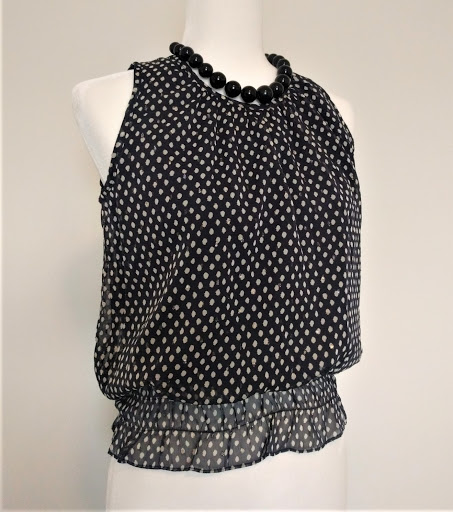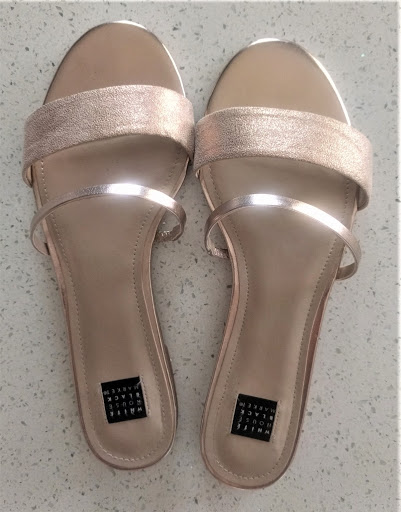This was a busy month as I moved from a wardrobe focused on attire appropriate for the workplace (even during the pandemic when I was working from home, I dressed in my normal work attire) to a more casual summer wardrobe. Here are the items I purchased at my local Goodwill along with their prices:
I found this beautiful Ann Taylor 100% cotton black blouse. I'm able to pair it with my white shorts and blue jeans:
$5.29. (Plastic "turquoise" necklace previously purchased used)
I was also excited to finally have a top with which I could wear the turquoise necklace. I'd purchased it years ago, holding on to the hope that I'd eventually have something I could wear it with!
I needed a belt to go with the utility skirt I'd purchased in July:
Stretchy woven belt with leather trim: $3.49
Here's a photo of the belt with the skirt:
I also purchased this top in August (pictured previously in this blog post):
$8.29. (Replacing another top that cost $4.29, so true cost was $12.58)
Finally, I needed to replace my falling-apart summer flipflops. I generally buy my shoes new, but I was willing to look at used first. These were not purchased at Goodwill; instead, I visited a consignment store nearby that holds very high standards for the shoes they'll accept for sale. With the help of a friend, I found these beautiful WHBM sandals that looked like they'd never been worn:
$13.00
Total expenses for the month of August: $34.36.





Comments
Post a Comment